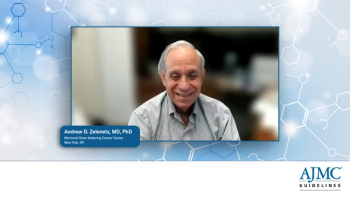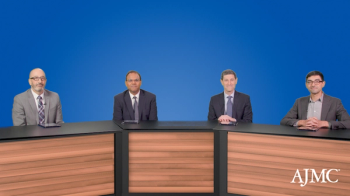
Considerations With Direct Oral Anticoagulants for Nonvalvular Atrial Fibrillation
Rajat Deo, MD, assistant professor of medicine at the University of Pennsylvania
In 2017, we have the advantage of, having available to us, 4 large clinical trials. All of the phase IV studies that have been published over the last few years review the use of novel oral anticoagulants. And clinical decision making, now, incorporates not just the early clinical trials, but also the international observational experience as well. Thankfully, those results are, for the most part, concordant. So, it has reaffirmed our confidence in using oral anticoagulant therapies for our nonvalvular atrial fibrillation patients.
In selecting one of the DOAC (direct oral anticoagulation) agents, cost is an important factor. We recognize that it’s not just about the initial 30-day prescription, it’s also about medication adherence as well. As a result, any time I make a decision for oral anticoagulant therapy, I want to ensure that the patient will be able to continue, and be able to afford, this medication for a lifetime.
Our team has to work closely with the individual’s insurance company to understand what those costs will be over time. The preferred DOAC agent for any given insurance company can vary, and our final decision will depend on what the cheapest agent available is, oftentimes, for our patients. But in general, we recognize that DOAC therapies do incur an out-of-pocket cost that is sometimes not compatible with the patient’s financial state. In those situations, we will prescribe warfarin therapy, which is obviously effective and significantly cheaper.
Having appropriate access to DOAC therapies is somewhat of a challenging issue. I think that most insurance companies do cover, to some extent, DOAC therapies. However, in the United States, using a DOAC still incurs a significant out-of-pocket expense. These patients are oftentimes diagnosed with other medical comorbidities, as well, and they have to choose which new agent they’re actually going to take. I have encountered, clinically, that factor to be a challenging issue. Even after having access to insurance reimbursement, it’s sometimes challenging to afford the out-of-pocket medication costs that are associated with new medications, especially if you’re on 3 or 4 of them.
The great thing about DOAC therapy is that the pharmacokinetics and dynamics are quite predictable. I don’t generally have any specific follow-up related to treatment because the individual is on a DOAC. I see most of my atrial fibrillation patients once or twice a year (unless there’s obviously another extenuating circumstance), and I’m comfortable with following them once or twice a year when they’re on DOAC therapy. Obviously, if there’s any issue related to bleeding or other side effects, I’ll see them sooner. But otherwise, no other routine follow up is necessary for monitoring a DOAC therapy.
In the field of atrial fibrillation, we recognize that anticoagulation is critical. There have been lots of studies that have evaluated the efficacy of therapy against the risk of therapy. We recognize that for all 4 DOAC therapies, looking at their efficacy and safety profiles in not just the clinical trials, but also in the observational studies that have come out since, they’re significantly more effective than harmful. I believe that they should be used, routinely, in our patients with nonvalvular atrial fibrillation.
There certainly are some exceptions in individuals who have significant comorbidities—especially our elderly who are at a high risk of falling or who fall frequently. We sometimes need to hold back on anticoagulation therapy, especially in those individuals that have gait instability, who are frail, and have had a history of falling multiple times (especially falls that have resulted in some type of head trauma). Those are individuals where I will hold back on DOAC therapy.
Newsletter
Stay ahead of policy, cost, and value—subscribe to AJMC for expert insights at the intersection of clinical care and health economics.












































